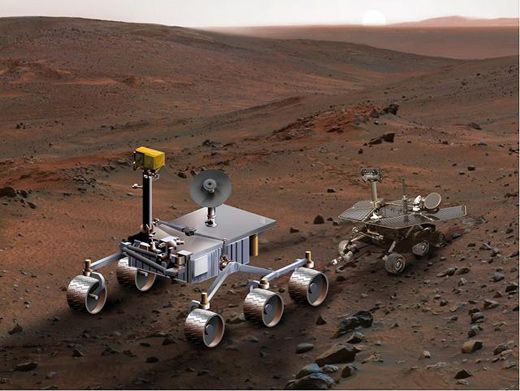Suggestion: Stop Improving
Why does every Mars mission have to be better than the last?
/https://tf-cmsv2-smithsonianmag-media.s3.amazonaws.com/filer/PIA08488-388-nov07.jpg)
While the Spirit and Opportunity Mars rovers keep plugging away after more than 1,300 days on the Martian surface (NASA just extended their mission for the fifth time) another, future Mars mission is in retreat. Rising costs associated with the Mars Science Laboratory (MSL) scheduled to launch in 2009 led space agency managers last month to downgrade several of its planned scientific instruments and remove two others.
MSL’s payload is described in a NASA release as “the biggest, most advanced suite of instruments for scientific studies ever sent to the Martian surface.” The project’s total cost is expected to run to $1.7 billion, almost three times the $645 million spent on Spirit and Opportunity. Reducing the capabilities of MSL’s science instruments will keep it from exceeding its budget by just $75 million.
It’s interesting that these decisions are being made around the 50th anniversary of the beginning of the Space Age. A quick look at some of the spacecraft on display at my home institution, the National Air and Space Museum, shows how NASA’s thinking has changed since those early days. The Mariner 10 spacecraft, for example, now on display at the Stephen H. Udvar-Hazy Center, is the only spacecraft ever to explore the planet Mercury, from 1974 to 1975. Yet with the exception of some instruments and minor modifications, it is essentially the same spacecraft as Mariner 9, which had provided us with the first complete map of the surface of Mars three years earlier. The Mariners explored two completely different worlds, yet their basic designs are identical.
The spacecraft sent to Mars in recent years illustrate how dramatically this philosophy has changed. With the exception of the Spirit and Opportunity rovers, which used the same landing system as the Mars Pathfinder, each spacecraft has been unique. As one colleague suggested to me, “It’s as though NASA has to send a spacecraft to Mars that is always bigger, better and sexier than the last.” As a result, we now spend more time thinking about how to explore other planets than actually doing it.
Starting from scratch every time you go to Mars has two negative effects. It increases the likelihood of failure. During the 1960s and ’70s NASA lost only two spacecraft while exploring Mars (Mariner 3 and 8), both due to launch failures. During the same time the agency successfully flew Mariner 4, 6, 7, and 9, as well as Viking 1 and 2. Since the 1990s NASA has lost three spacecraft while successfully flying six. Launch failures are no longer the problem—it’s the spacecraft themselves that have failed.
The second effect of flying new and improved hardware on each mission is that costs go up. You don’t need to be a rocket scientist to figure out that when you buy things in quantity, the price of each item goes down. When it comes to building spacecraft, these savings can be enormous. Design and testing are extremely expensive, but if you re-fly the same spacecraft, your development costs have already been paid. For the same price as one new Mars Science Laboratory, NASA could have bought at least six additional copies of the Spirit and Opportunity rovers. As a scientist I don’t really care how much more advanced the instruments will be on MSL. The ones on MER would have done just fine, especially if it meant that we could have explored six additional landing sites.
Imagine if NASA had completely redesigned the Lunar Module for every Apollo landing. Instead we used the same one six times, with only slight modification—and with great success.
People often ask me if we’ll ever see a manned Mars landing. The sad truth is that I don’t think anyone alive today will see that day. Eventually we’ll have to decide that reaching the planets is our biggest priority. Not flying the biggest spacecraft.
Bob Craddock is a geologist with the National Air and Space Museum’s Center for Earth and Planetary Studies.
